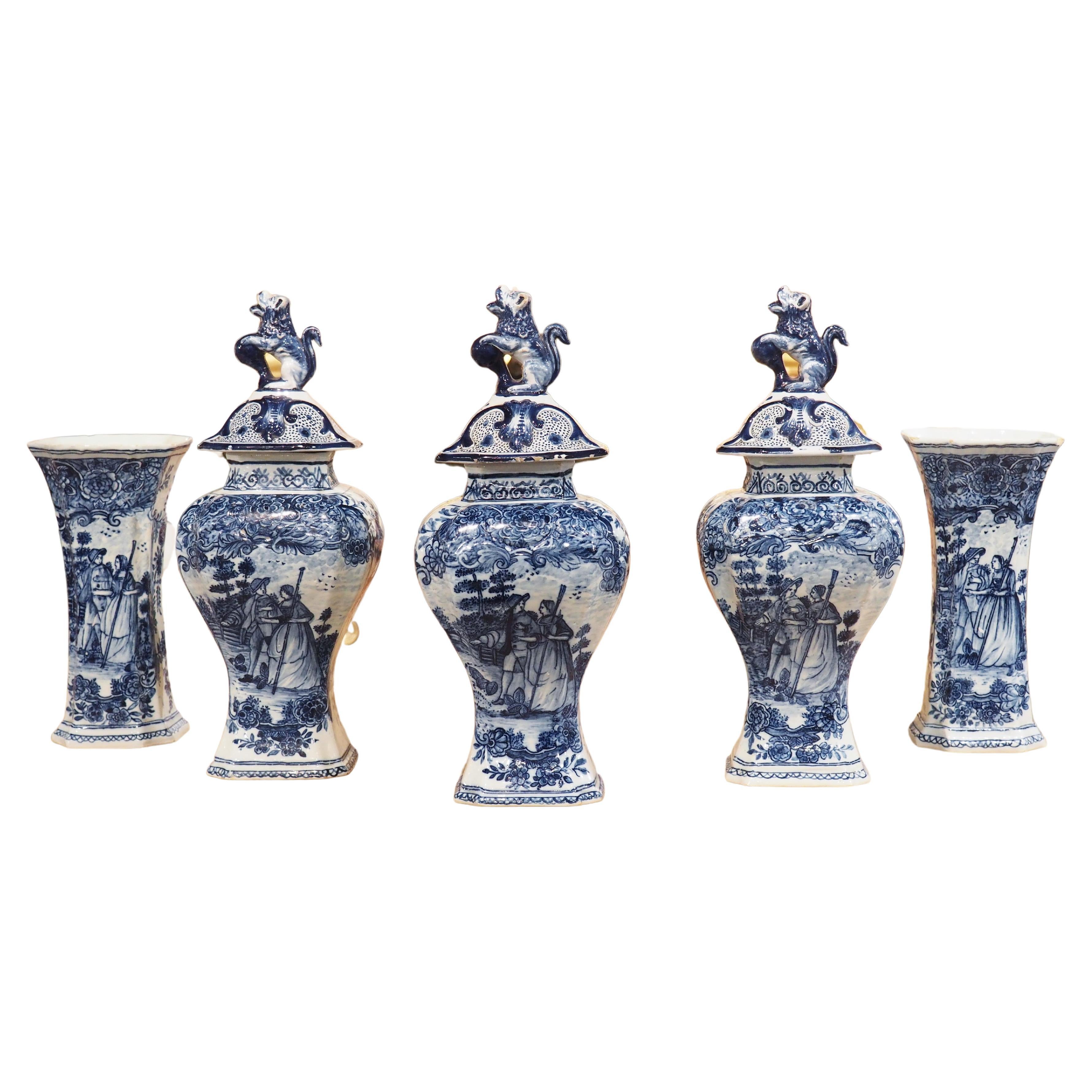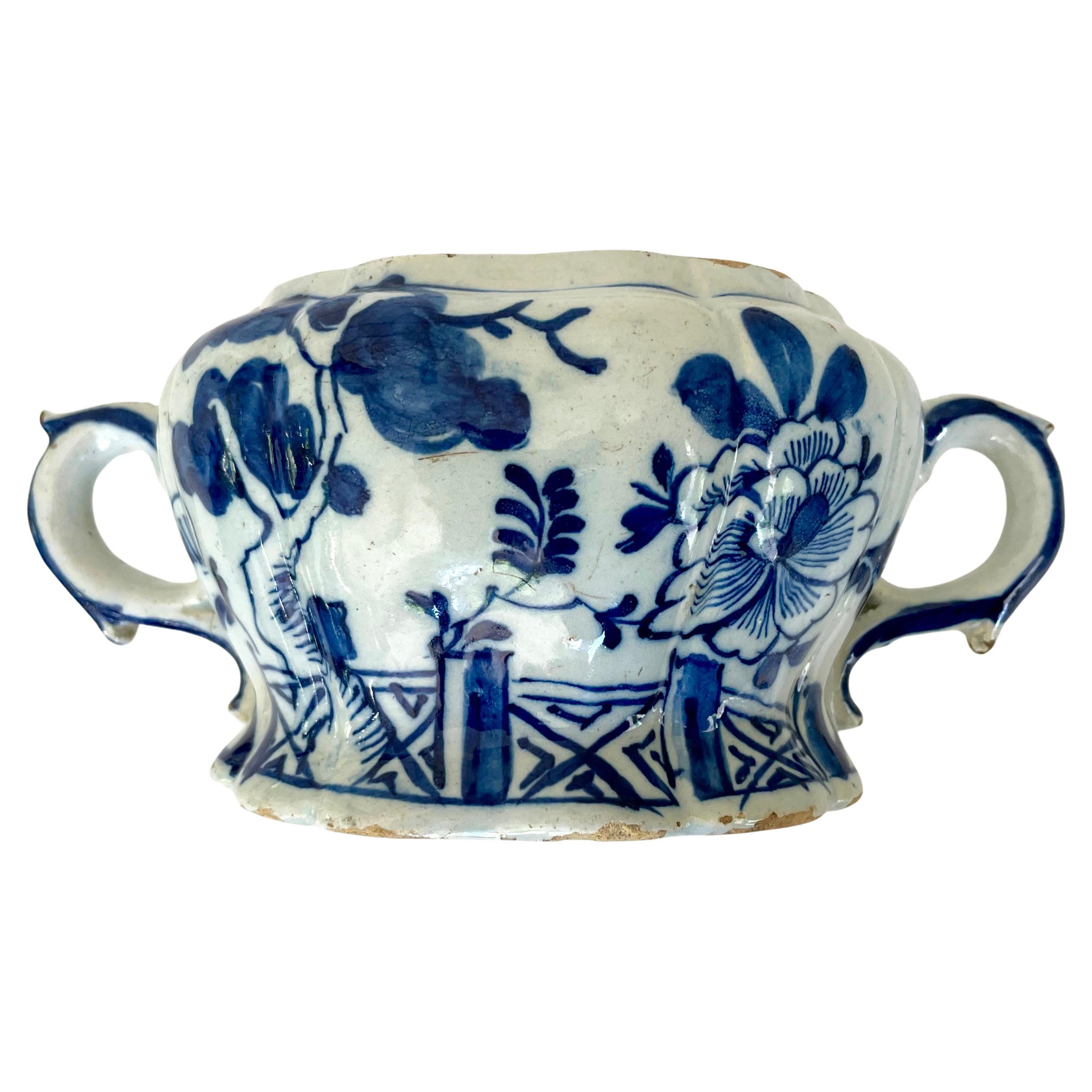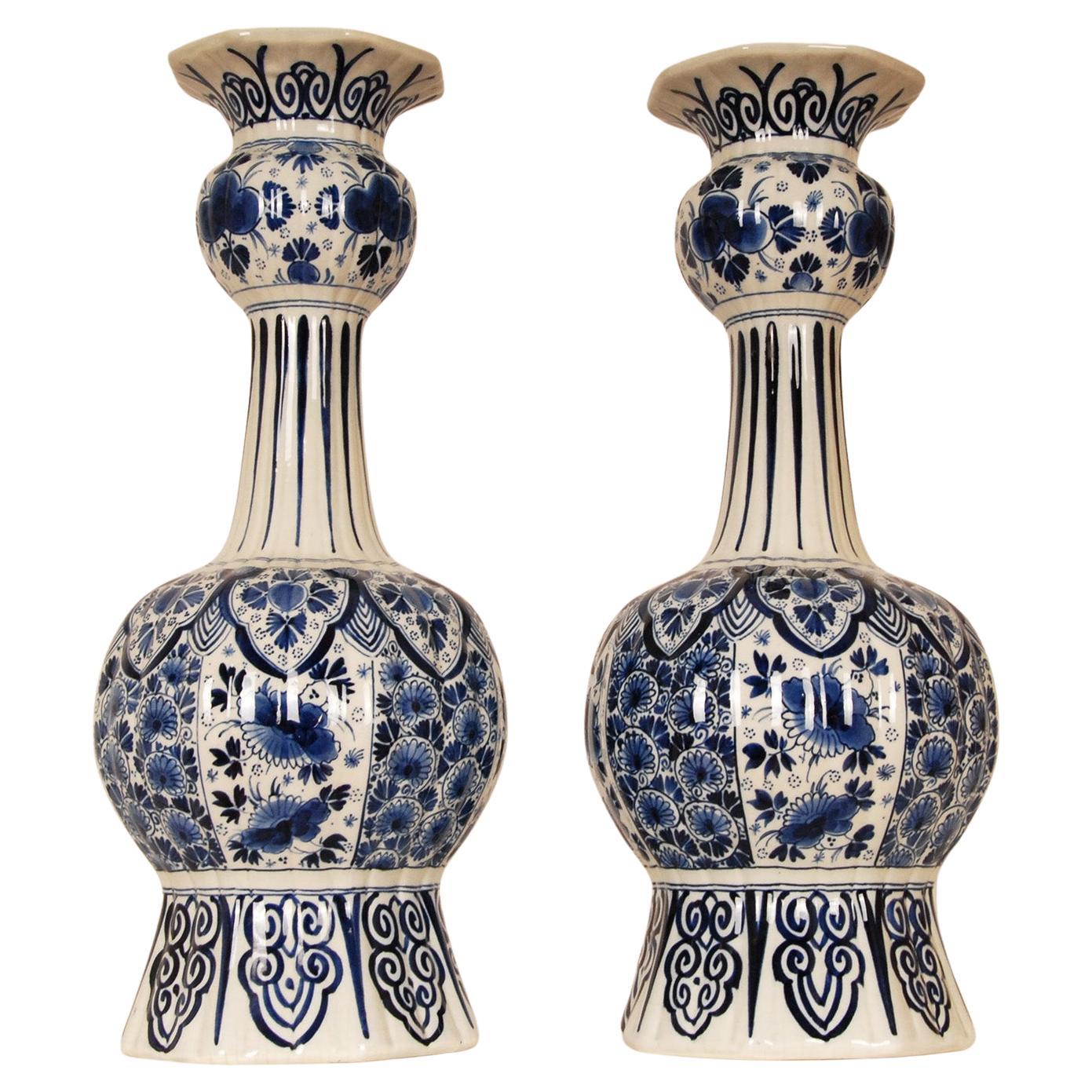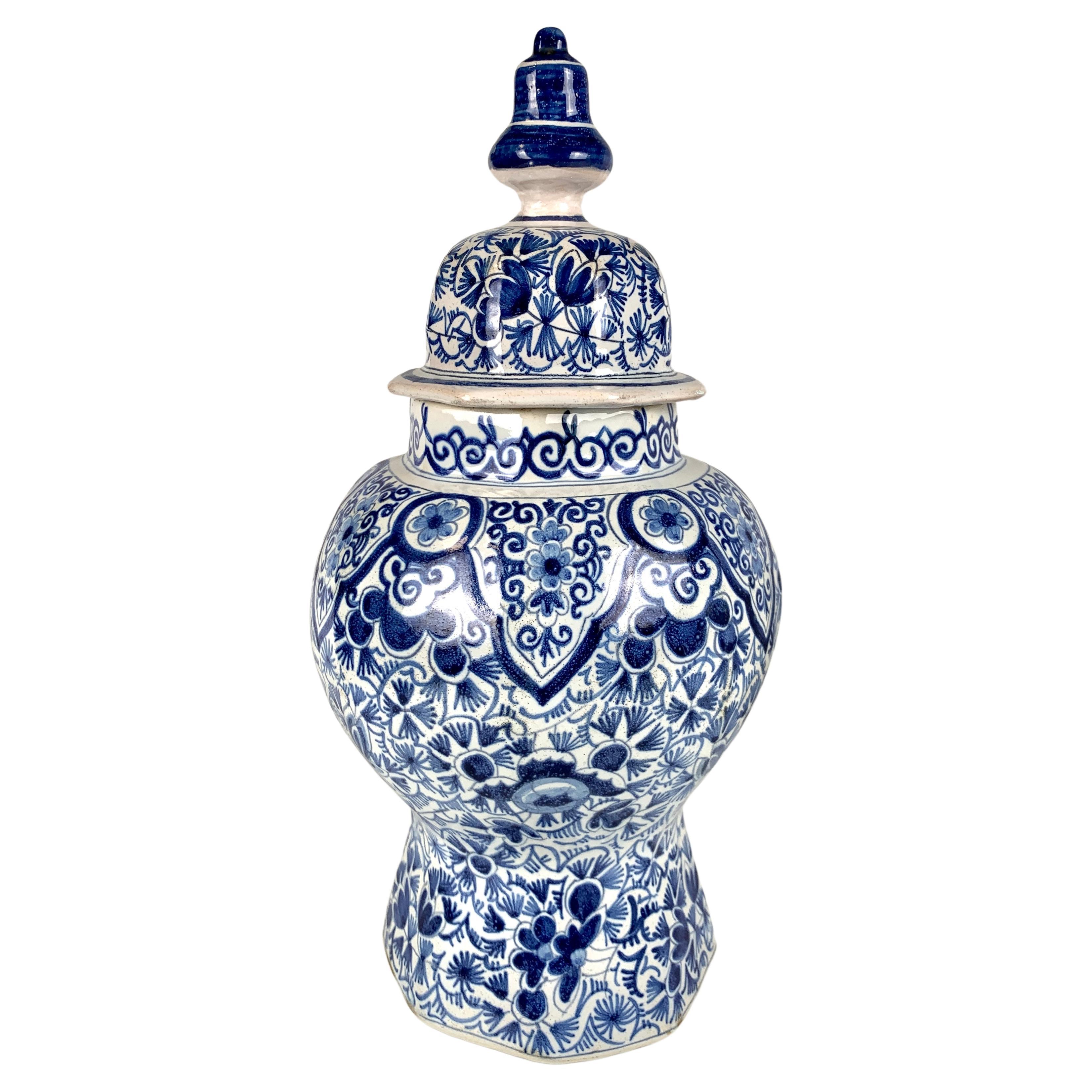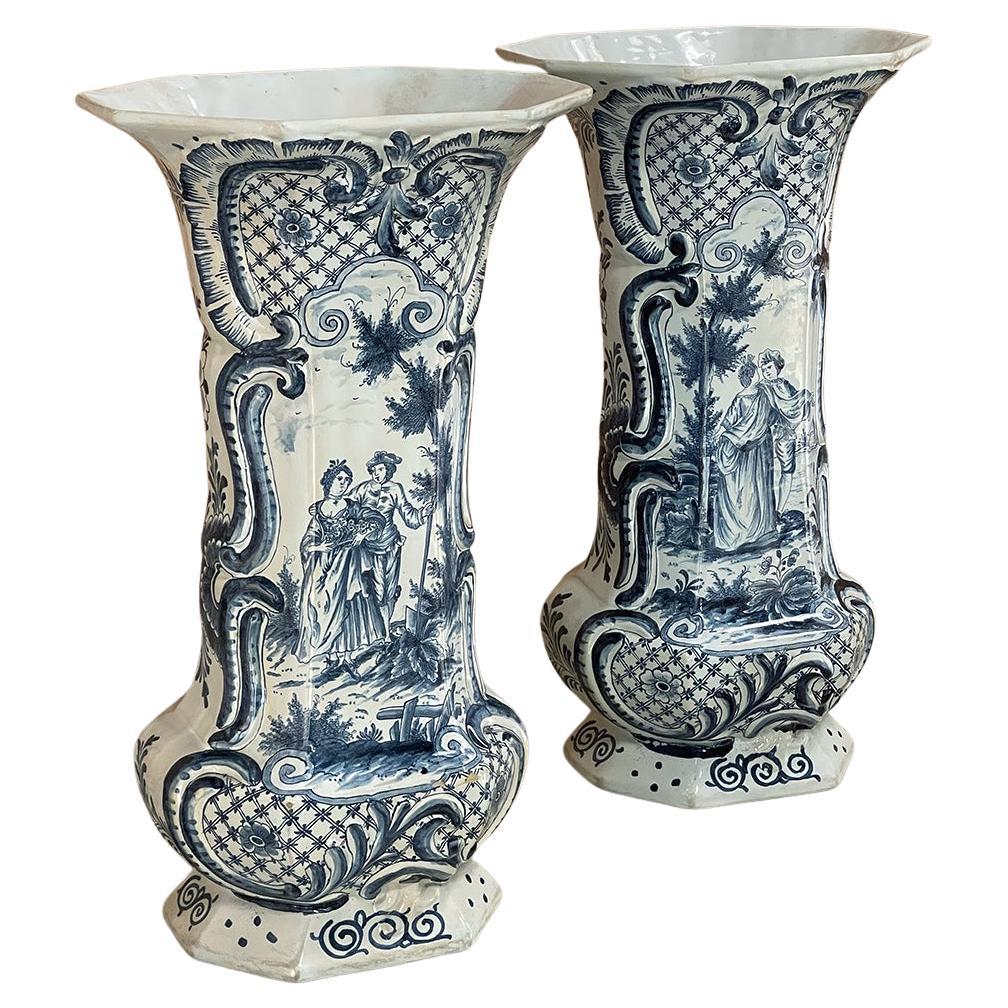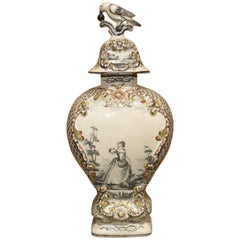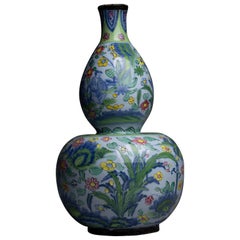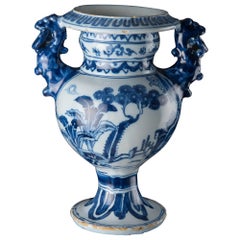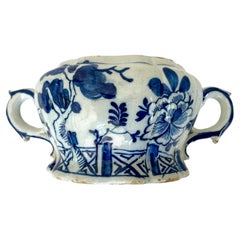
Antique Blue and White Quintal Flower Vase, Delft, Holland, circa 1850
View Similar Items
Want more images or videos?
Request additional images or videos from the seller
1 of 19
Antique Blue and White Quintal Flower Vase, Delft, Holland, circa 1850
About the Item
- Dimensions:Height: 9.5 in (24.13 cm)Width: 8.5 in (21.59 cm)Depth: 3.125 in (7.94 cm)
- Materials and Techniques:
- Place of Origin:
- Period:
- Date of Manufacture:circa 1850
- Condition:Wear consistent with age and use. Very good antique condition with minor buildup to fingers, commensurate with age and use. Fleabites and light rubs.
- Seller Location:Dallas, TX
- Reference Number:Seller: 1222-81stDibs: LU906333269212
About the Seller
5.0
Platinum Seller
These expertly vetted sellers are 1stDibs' most experienced sellers and are rated highest by our customers.
Established in 1983
1stDibs seller since 2011
734 sales on 1stDibs
More From This SellerView All
- Set of 5 Circa 1900 Blue and White Delft Vases from HollandLocated in Dallas, TXA beautiful set of five blue and white Delft vases, this faience collection was hand-painted in Holland, circa 1900. The three bulbous vases are lidded, each with a finial depicting a rampant lion with a ball in its forepaws. Beneath the lion is a mottled background (on the front side only), with a foliate and floral margent. Each vase has the same scene painted on the front of the main body: a couple walking through a field surrounded by flowers. The opposite side has a floral rinceaux above a foliate branch. Painted in a similar fashion, the two concave vases are without lids. The side opposite from the cartouche of the couple has floral margents. All five vases have canted corners on the base. Inspired by Italian majolica, the faience produced in 16th century Holland...Category
Antique Early 1900s Dutch Delft and Faience
MaterialsDelft, Paint
- 18th Century Dutch Polychrome Delft Baluster Form VaseLocated in Dallas, TXThis hand-painted Delft vase was produced in the Netherlands in the 1700’s. Delft is a city in the western part of the Netherlands that is world-renowned for ceramic pieces. As a home port of the Dutch East India Company, Delft was at the forefront of producing faience wares, which were influenced by imported Chinese porcelain. The prototypical Delftware has a white background with hand-painted cobalt blue imagery, though they can also be found in multi-colored or “polychrome” variations, such as ours. Our baluster form vase has a hand painted scene depicting a woman in a flowing dress walking across a field. The scene is surrounded by flowers, curled leaves, and a diapered background with flowering vine offshoots. On the opposite side of the baluster is a large flowering vine. The lid has a rural life cartouche that is painted with a scene depicting a farm overlooking a field or body of water . The handle of the lid has a similarly colored bird perched on a sinuous branch, while pecking at a berry. This particular design was seen on many delft baluster...Category
Antique 18th Century Dutch Delft and Faience
MaterialsDelft
- Large Antique Italian Blue and White Lidded Urn, 19th CenturyLocated in Dallas, TXThis stunning lidded urn might have once been found in a 19th century Italian apothecary. The front of the shaped urn body has the hand-painted phrase “C. Violaru”, which is the heavily abbreviated form of the Latin word for violet (violaceum). Up until the mid-1700’s, apothecaries would make syrups from violets and use it to treat kidney ailments. Above the Latin wording is a whimsical musical scene with a man blowing a horn leading a couple who is holding hands over rocky terrain lined with shrubbery. A large house and trees can be seen behind the trio with a pair of mountains in the distance. On the opposite side of the urn is a floral display with a bird perched on a rock. Beneath the bird is a geometric design, possibly a stylized sun with radiating beams of light. Both scenes are segmented by a pair of thin quarter round moldings that encircle the entire vase. Other hand-painted motifs include floral and foliate margents, geometric patterns, and Vitruvian waves that are infilled with horizontal fluting. The sides of the urn have a fish-scale background beneath two mustachioed mascarons. Both men have been styled in grotesque fashion, with a pair of spiraled horns emanating from their heads. In between the horns is a looping handle that is affixed to the body in similar tight spirals. The domed lid has three scrolled arms that merge in a geometric finial. The base color of the urn is white, with illustrations in a monochromatic cobalt oxide blue, reminiscent of Delft blue pottery...Category
Antique 19th Century Italian Urns
MaterialsPorcelain
- Tall Painted Italian Majolica Vase, circa 1860Located in Dallas, TXFrom Italy, this imposing antique hand-painted Majolica vase with handles is nearly 39 inches high. It is mainly a figural vase in style, ha...Category
Antique Late 19th Century Italian Renaissance Vases
MaterialsMajolica
- Pair of Antique French Blue and White Saint-Clément Faience Lion Candle HoldersLocated in Dallas, TXA beautiful pair of hand-painted cobalt blue and white candle holders, these faience lions date to circa 1890. Based on production marks l...Category
Antique 1890s French Delft and Faience
MaterialsFaience, Paint
- Pair of Early 1900’s Cobalt Blue and White Cylinder form Vases from HollandLocated in Dallas, TXInspired by the Delftware products that became world renowned in the mid-17th to mid-18th centuries, this pair of cobalt blue and white cylinder vases were hand-painted in Holland (Netherlands) in the early 1900’s. The vases depict two distinct scenes, which were interestingly painted by different artists. One vase has a farmhouse scene signed by “E. Lombart”, with a thatched roof house set near two large trees. In front of the house is a woman watching over a cow and three chickens as they gather near a stone feeding trough...Category
Early 20th Century Dutch Vases
MaterialsCeramic, Paint
You May Also Like
- Early 18th Century Blue and White Dutch Delft Clobbered VaseLocated in Fort Lauderdale, FLA blue and white Dutch delft vase made circa 1700, with clobbered-style polychrome enamels added in the mid-18th century. This brightly colored blue and white Dutch delft vase is a ...Category
Antique Early 18th Century Dutch Dutch Colonial Vases
MaterialsDelft, Pottery
- Delft, Blue and White Chinoiserie Altar Vase, circa 1685By Dutch OriginalsLocated in Verviers, BEBlue and white chinoiserie altar vase. Delft, circa 1685 The ovoid altar vase stands on a high-waisted foot. The flaring cylindrical neck ends in an outward sloping mouth rim. The two blue coloured lion-shaped handles have suspending rings in their jaws. The body is painted with a continuous oriental landscape with banana and pine trees, Chinese figures and houses, while the neck is painted with three bands of different ornaments. The mouth rim is decorated with rectangular ornaments, the foot with leaves under a band around the ankle. Altar vases are also called vases à chimères. The oldest faience examples were made in the sixteen-twenties in Nevers, France and are attributed to the Conrade potters family, who originated from Italy. The shape is based on metal vases used during the services in Catholic churches. Therefore it is no wonder that many altar vases are painted with the Christogram IHS. Altar vases were made in Delft from about 1675 onwards and production continued well into the eighteenth century. Marked examples are known from multiple manufacturers, such as The Greek A and The Moor’s Head potteries (Aronson 2011, pp. 14-15). A pair of eighteenth century vases was made between 1700 and 1716 at The Three Porcelain Ash Barrells pottery. They are marked with PK for the owner Pieter Kam or, after 1705, by his widow (Blazy & Boyazoglu 1983, p. 110). The pair is painted with a dense parsley decor. A miniature example was excavated from a cesspit in the grounds of the former Porcelain Bottle pottery in Delft. At the same location a larger fragment was also found, decorated with a triple-tulip design in blue and yellow (Eliëns, Schledorn, Van Aken-Fehmers, pp. 31 , 36, 45). Three altar vases with similar tulip and flower decoration in blue and yellow are in the collection of the Dutch Open Air Museum in Arnhem and can also be attributed to the Porcelain Bottle pottery (Klein, p. 152). Official Catholic services were not allowed in the seventeenth century in the Dutch republic, however Catholic conventicles were tolerated. At first sight it might be surprising that a Catholic object...Category
Antique Late 17th Century Dutch Baroque Delft and Faience
MaterialsCeramic, Faience
- Blue and White Delft Handled Chinoiserie VaseBy DelftLocated in New York, NYBlue and white Delft handled chinoiserie vase. Antique Dutch porcelain vase with rich blue flowers and chinoiserie fencing in a lustrous glaze; with scro...Category
Antique Late 18th Century Dutch Chinoiserie Delft and Faience
MaterialsCeramic
$1,400 / item - Dutch Delft Polychrome Vase with Flowers and Birds, Mid 18th CenturyBy De Porceleyne SchotelLocated in AMSTERDAM, NHFine Dutch Delft vase with decoration is flowers and birds. Origin: Delft, The Netherlands Date: 1724 - 1764 Workshop: De Porceleyne Schotel (The Porcelain Dish) By: Jan Pennis...Category
Antique Mid-18th Century Dutch Rococo Vases
MaterialsFaience, Ceramic, Delft
- Very Large Blue and White Dutch Delft Vase in Chinoiserie, Early 18th CenturyLocated in AMSTERDAM, NHA Rare and Very Large, Early Dutch Delftware vase with chinoiserie decoration. Origine: Delft, The Netherlands Date: 1724 - 1757 Workshop: De Metaale Pot under the management of Cornelis Koppens. Marked CK for Cornelis Koppens. The very large vase...Category
Antique Early 18th Century Dutch Chinoiserie Delft and Faience
MaterialsCeramic, Delft, Faience
- Antique Royal Delft Vases Chinoiserie Blue White Knobble Vases Earthenware pairBy Delft, AK Dutch Delftware, Royal DelftLocated in Wommelgem, VANA pair Dutch Royal Delft vases. Tall decorative vases on an octagonal foot. The vases are hand crafted and hand painted in enchanting blue colors, blue camaieu. Floral decoration wit...Category
20th Century Dutch Baroque Revival Delft and Faience
MaterialsEarthenware, Delft
Recently Viewed
View AllMore Ways To Browse
Antique Dining 1850
Dutch Blue White
Dutch Blue And White
Delfts Holland
Five Fingers
Five Fingered
Antique Delft Holland
Dutch Painted Antiques
Blue And White Earthenware
Antique Tulips
Heart Display
Antique Dutch Painted Furniture
Antique Blue Heart
Antique Chevron
Table Center Vase
Delfts Blue Pair
White Tulip Dining Table
Antique Windmills
